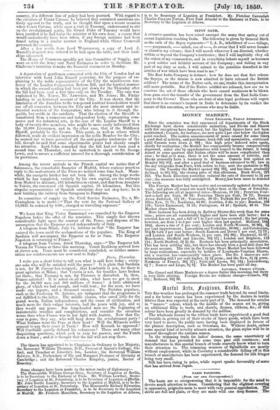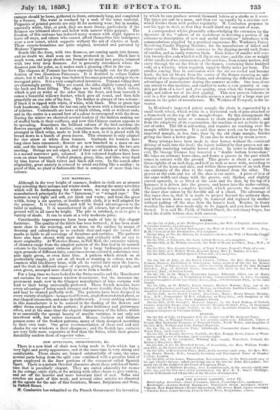PARIS FASHIONS.
(From our own Correspondent.)
The heats an so overpowering that it is impossible for the mind to devote much attention to dress. Considering that the slightest covering is oppressive, peignoirs seem to meet with very general approbation. The skirts are full and plain, or they are made with one deep flounce. The casaque should be loose, gathered in front, extremely long, and completed by a flounce. The waist is confined by a sash of the same material. Peignoirs of printed percale are only fit for morning wear; but in muslin, especially white, blue, or pink, they are more dressy, particularly if the flounces are trimmed above and below with narrow white guipure. The freedom of this costume has induced many women with slight figures to leave off stays, and others who cannot afford themselves this indulgence wear a new corset, which supports without the aid of elastics or busk. These corsets-brassieres are quite original, invented and patented by Madame Vigourous.
Scarfs like the dress, with two flounces, are coming again into favour, and no doubt we shall soon see them produced in lace. Black lace is much worn, and large shawls are forsaken for small lace points, trimmed with two very deep flounces. Jet is generally introduced where the flounces join the point, as it makes such a pleasing effect in the sun.
The chapeau de Panama has been expressly brought out for the grati- fication of two illustrious Princesses. It is destined to eclipse Italian straw, but it will be a long time before it becomes general, owing to its ex- travagant price. It is a very complicated invention. Panama riding-hats are charmingly pretty. They are round, the sides slightly turned up, and the back and front falling. The edges are bound with a black velvet, which is put on wider at the sides than the front, and from beneath it comes a beautiful willowy feather, which goes all round, and then falls gracefully on one side of the face. The feather is always of two colours ; if black it is tipped with white, if white, with black. Blue or green tips look handsome, only then the hat can only be worn with a limited number of toilettes. Underneath are bows of black ribbon, with or without ends, and in the centre is a second bow of a colour to correspond with the dress. During the winter we observed several leaders of the fashion making use of stuffed birds in their coiffures, and now this Chinese custom appears to be spreading. Sometimes the brilliant colours of the bird outshine the flowers amongst which it nestles; sometimes the specimen is artistically arranged in black crepe, made to look like a nest, or it is placed with its breast down in a bunch of green leaves. This ornament is only adapted for rice straw or white dress bonnets. Garlands for bonnets have long since been renounced ; flowers are now bunched in a mass on one. side, and the inside bouquet is often a mere continuation, the two sets meeting. Strings are not edged, and if they are of black or white, there is a second narrower pair, coloured. A few coloured feathers have been seen on straw bonnets. Curled plumes, green, blue, and lilac, were fixed by vine leaves of black velvet and black silk corn. In the search after originality, great anxiety is evinced to avoid anything like a medley ; in proof of this, no plaid is fashionable that is composed of more than two colours.



























 Previous page
Previous page